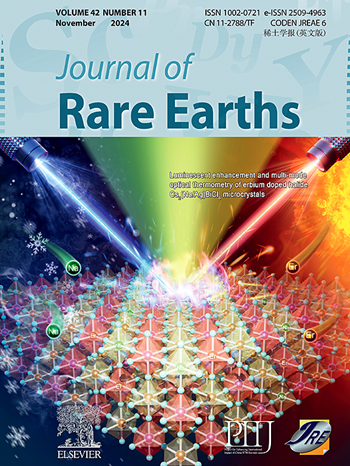Impact of sodium carboxymethyl cellulose on redispersibility and polishing performance of lanthanum-cerium-based slurry containing sodium hexametaphosphate
IF 5.2
1区 化学
Q1 CHEMISTRY, APPLIED
引用次数: 0
Abstract
The lanthanum-cerium-based slurry (LC-slurry) is extensively utilized in the chemical mechanical polishing (CMP) of TFT-LCD glass substrates, optical lenses, and other glass products. Sodium hexametaphosphate (SHMP), as a dispersant, is commonly employed to enhance the dispersion properties of LC-slurry for improved polishing performance. However, the tendency of sedimentation to form a compacted sediment layer, which is challenging to redisperse, increases storage difficulty and polishing equipment failure risk, thereby limiting its utilization in CMP. In the present study, sodium carboxymethylcellulose (CMC-Na), a long-chain organic polymer, was employed to enhance the redispersibility of LC-slurry containing SHMP. A comprehensive investigation was conducted on the influence of CMC-Na dosage and slurry pH on dispersibility, redispersibility and polishing performance. Additionally, an analysis was carried out to elucidate the underlying mechanism behind the effect of CMC-Na. The study demonstrates that the LC-slurry, containing 250 ppm SHMP and 500 ppm CMC-Na, exhibits excellent dispersibility and redispersibility. Further polishing tests demonstrate that compared to the LC-slurry containing only SHMP, utilizing the slurry containing both SHMP and CMC-Na at various pH for polishing thin film transistor liquid crystal display (TFT-LCD) glass substrates results in a reduction of both material removal rate (MRR) and surface roughness (Sa). Specifically, when adjusting the slurry to a pH range of 5–6, the MRR can reach up to 330 nm/min, which closely approximates the MRR achieved by LC-slurry containing only 250 ppm SHMP at corresponding pH values. Meanwhile, after polishing, the surface roughness of the glass substrate measures approximately 0.47 nm.

求助全文
约1分钟内获得全文
求助全文
来源期刊

Journal of Rare Earths
化学-应用化学
CiteScore
8.70
自引率
14.30%
发文量
374
审稿时长
1.7 months
期刊介绍:
The Journal of Rare Earths reports studies on the 17 rare earth elements. It is a unique English-language learned journal that publishes works on various aspects of basic theory and applied science in the field of rare earths (RE). The journal accepts original high-quality original research papers and review articles with inventive content, and complete experimental data. It represents high academic standards and new progress in the RE field. Due to the advantage of abundant RE resources of China, the research on RE develops very actively, and papers on the latest progress in this field emerge every year. It is not only an important resource in which technicians publish and obtain their latest research results on RE, but also an important way of reflecting the updated progress in RE research field.
The Journal of Rare Earths covers all research and application of RE rare earths including spectroscopy, luminescence and phosphors, rare earth catalysis, magnetism and magnetic materials, advanced rare earth materials, RE chemistry & hydrometallurgy, RE metallography & pyrometallurgy, RE new materials, RE solid state physics & solid state chemistry, rare earth applications, RE analysis & test, RE geology & ore dressing, etc.
 求助内容:
求助内容: 应助结果提醒方式:
应助结果提醒方式:


